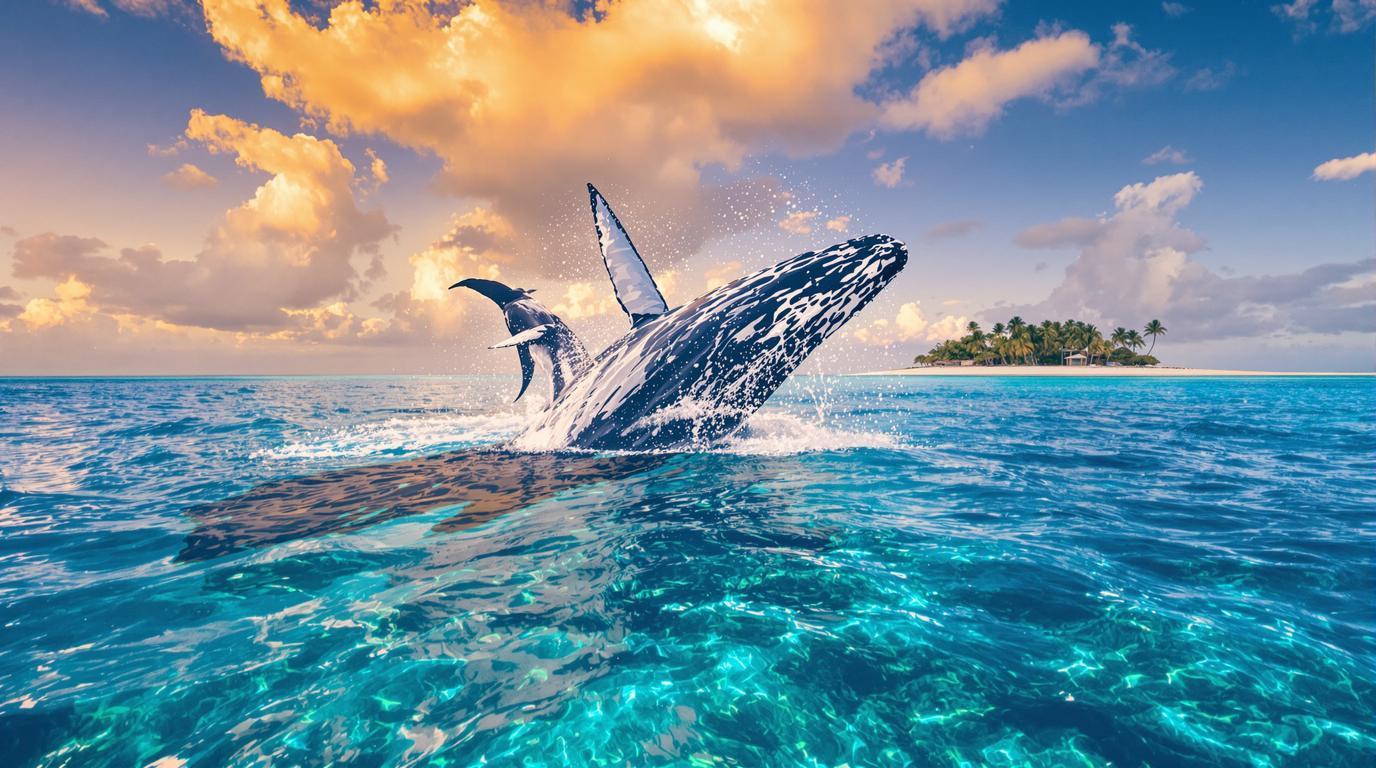On my third morning in the Turks and Caicos, I discovered something extraordinary that changed everything I thought I knew about the Caribbean. While other travelers crowded the beaches of Providenciales, I found myself on a 2.6-square-mile island where 100 residents guard the most spectacular whale watching secret in the entire region.
Salt Cay isn’t mentioned in mainstream travel guides, and that’s exactly how the locals prefer it. This tiny UNESCO World Heritage candidate sits at the edge of the 7,000-foot-deep Columbus Passage, where humpback whales migrate each winter with their newborn calves.
What I witnessed here wasn’t just whale watching – it was a sacred ritual that locals have protected for generations, creating an authentic Caribbean experience that mass tourism could never replicate.
The marine sanctuary locals call their greatest treasure
Where humpback mothers teach their calves to swim
The Columbus Passage transforms into nature’s nursery each January through March, when humpback whales arrive to raise their young in the warm, shallow waters surrounding Salt Cay. Unlike the crowded whale watching tours elsewhere, here you’ll witness mothers patiently teaching calves to breach just 200 yards from shore.
The underwater cathedral only locals know
Salt Cay’s residents speak reverently about the underwater cathedral – a natural formation where whales’ songs echo through the Columbus Passage. Local guide Captain James showed me spots where three generations of his family have watched the same whale families return each season, creating bonds that transform casual observation into spiritual communion.
The 100 guardians who protect paradise from mass tourism
Why residents actively discourage large tour groups
Salt Cay’s 100 residents have collectively decided that their island’s magic comes from intimacy, not infrastructure. They’ve deliberately avoided building large hotels or paved roads, instead offering small-scale experiences through family-run guesthouses like the historic Halfway House.
The unspoken agreement that preserves authenticity
Every resident I met shared the same philosophy: quality over quantity. They limit whale watching to small boats carrying maximum six passengers, ensuring both whale safety and visitor intimacy. This isn’t just environmental protection – it’s cultural preservation of a Caribbean way of life that’s vanishing elsewhere.
The UNESCO nomination creating urgent protection
Why Salt Cay’s heritage status matters now
Salt Cay’s UNESCO World Heritage nomination recognizes both its Bermudian salt-production history and its critical role in humpback whale conservation. The island’s 18th-century saltworks, perfectly preserved windmill foundations, and pristine marine environment represent Caribbean heritage at its most authentic.
The timing that makes this discovery urgent
With UNESCO recognition pending, Salt Cay faces increased attention that could transform its character forever. Visiting now means experiencing the island as locals have known it for centuries – before international recognition potentially brings the crowds they’ve successfully avoided.
The exclusive experience that costs 70% less than Providenciales
The authentic whale encounters you can’t find elsewhere
While Providenciales charges $300+ per person for crowded whale watching tours, Salt Cay’s intimate experiences cost around $150 – and include lunch with local families who’ve been whale guardians for generations. You’ll swim in waters where whales actively choose to interact, not flee from boat engines.
The island time that money can’t buy
Salt Cay operates on island time – a pace that lets you truly absorb the whale watching experience. Instead of rushing between scheduled activities, you’ll spend entire mornings watching whale families, learning their individual behaviors, and understanding why locals consider each whale a returning friend rather than a tourist attraction.
Planning your secret Caribbean whale sanctuary visit
When to visit for the ultimate whale experience
Plan your visit between January and March when humpback mothers arrive with newborn calves. February offers peak whale activity, with calm seas and the highest probability of intimate encounters that locals describe as life-changing.
How to respect the guardians’ wishes
Book through Salt Cay Conservation Initiative to ensure your visit supports local protection efforts. Choose authentic whale watching experiences that prioritize marine conservation over tourism profits.
Essential information for respectful visitors
What should I expect during whale watching season?
Expect intimate encounters with humpback whale families in groups of maximum six people. Water temperatures average 80°F, with calm conditions ideal for both whales and swimming.
How do I book whale watching tours?
Contact local operators like Salt Cay Divers who follow strict conservation protocols. Advanced booking essential due to limited capacity and seasonal demand.
Where should I stay on Salt Cay?
Historic guesthouses like The Halfway House offer authentic accommodation at $250-400 per night, compared to Providenciales’ $600+ resort rates.
Salt Cay represents everything authentic Caribbean travel should be – a place where locals actively protect their greatest treasures while sharing them with respectful visitors. This isn’t just whale watching; it’s participating in a conservation legacy that 100 dedicated guardians have maintained for generations.
Visit now, before the secret becomes too widely known, and experience the hidden Caribbean paradise that locals hope will remain exactly as magical as the day I first discovered it.
